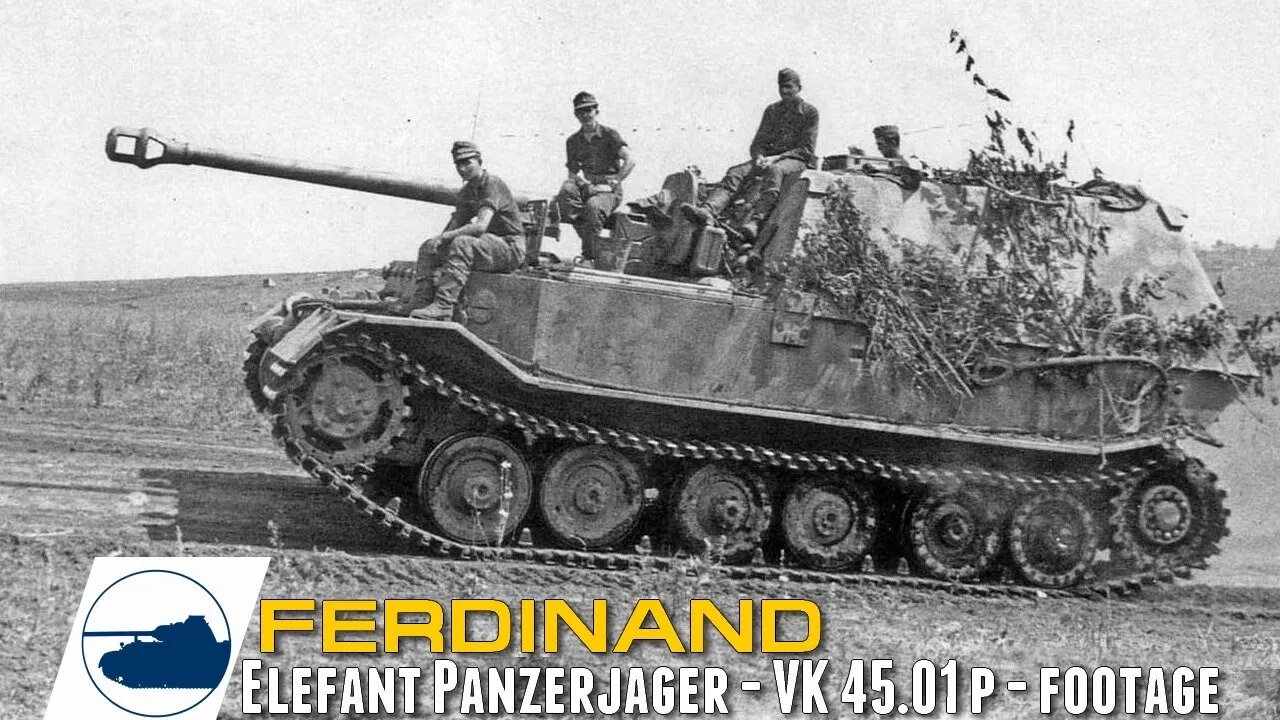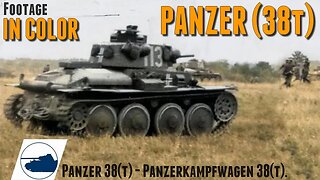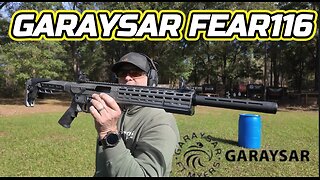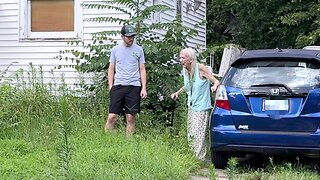Premium Only Content

Rare Ferdinand - Elefant Panzerjager - VK 45.01 p WW2 Footage.
The Ferdinand was a heavy tank destroyer used by Germany during World War II.
It was named after its designer Ferdinand Porsche and 100 manufactured tanks chassis would be used from their unsuccessful proposal for the Tiger tank, the "Porsche Tiger", which were produced in the Nibelungenwerk factory in Sankt Valentin, Austria.
It was therefore decided that the Porsche chassis were to be used as the basis of a new heavy panzerjäger, Ferdinand, mounting Krupp's newly developed 88 mm (3.5 in) Panzerjägerkanone 43/2 anti-tank gun. and 91 units were built in 1943 under the name Ferdinand. and three Bergepanzer Ferdinands were produced at the Nibelungenwerke in summer 1943
Ferdinands first saw combat in the Battle of Kursk, where 89 were deployed, the largest deployment of the vehicle during its service.
The Ferdinand was optimized for destroying Soviet T-34 tanks and 76.2 mm anti-tank guns from behind the front lines with its 88 mm gun at a range of over 3 kilometres, a role which it performed well. Its most significant problem at Kursk was mine damage and mechanical failure.
The immense weight of the Ferdinand made towing difficult and most were abandoned, the Ferdinand proofed to be hampered by flaws such as the lack of peripheral vision blocks, or a machine gun as secondary defensive armament.
The surviving Ferdinands fought various rear-guard actions in 1943 until they were recalled to be modified and overhauled, partially based on battle experience gained in the Battle of Kursk, but only 48 of the 50 had survived.
These new upgraded versions were predesignated as Elefant in May 1944, they would see upgrades like a ball-mounted MG 34 in the hull front, a new commander's cupola, re-designed armored engine grates and the application of Zimmerit anti-magnetic mine paste.
Due to the Allied landing in Anzio-Nettuno, Italy, the first eleven complete and updated Ferdinands were issued to the schwere Panzerjäger-Abteilung 653, sPzJgrAbt 653 and were deployed at the end of February 1944. The remaining 37 vehicles were completed in April and were issued to the 2nd and 3rd companies of sPzJgrAbt 653 which boarded trains and sent to the Tarnopol battles in Ukraine.
Although the modifications improved the vehicles, some problems could never be fully fixed.
The vehicle proofed to be almost useless, on the Italian front, and their 70 tonnes did not allow them to use most Italian roads and bridges. At Kursk, most of them were lost by mechanical breakdowns and lack of spare parts compelled their crews to destroy and abandon them.
Join this channel to get access to perks:
https://www.youtube.com/channel/UCjejQojHTTggkEi_6d15Svg/join
■ So want to help keep me and the channel going?
Please consider buying a cup of coffee!
https://www.buymeacoffee.com/panzerpi...
supporting me on Patreon and Buymeacoffee will get you access to extra content for three channels in total.
■ Support me on my Patreon https://www.patreon.com/Panzerpicture
■ Or buy me a Coffee on https://www.buymeacoffee.com/panzerpicture
■ Store: https://panzerpicture-2.creator-spring.com/
■ Information obtained from several sites.
■ Wikipedia
■ tanks-encyclopedia
■ the.shadock.free.fr/Surviving_Panzers
■ preservedtanks
■ pantser.net
■ the.shadock.free.fr/Tanks_in_France
■ Some music is from the YouTube Audio Library.
■ Music used:
EpidemicSound.com
Copyright fair use notice
All media used in
this video is used for
the purpose of education
under the terms of
fair use.
All footage and images
used belong to their
copyright holders.
-
 2:23
2:23
PANZER Insight
1 year agoWW2 Color footage Panzer 38(t) - Panzerkampfwagen 38(t).
1481 -
 24:46
24:46
Cooking with Gruel
1 day agoFeeding Hope - LA Wildfire Relief from the People
1.07K6 -
 14:34
14:34
MichaelBisping
11 hours agoSean Strickland CONFRONTS Bisping! 'Pereira in Corner, Dricus and Khamzat!' (EXCLUSIVE INTERVIEW)
8922 -
 59:54
59:54
Trumpet Daily
18 hours ago $3.20 earnedThe Trade War Ends - Trumpet Daily | Feb. 4, 2025
4.14K8 -
 5:44
5:44
DropItLikeItsScott
11 hours agoA Must Have Shotgun - GARAYSAR Fear 116
9272 -
 56:14
56:14
PMG
17 hours agoHannah Faulkner and John Strand | BLANKET PARDON FOR ALL J6er's
1.61K2 -
 48:51
48:51
State of the Second Podcast
14 hours agoWhy Does Palmetto State Armory Keep Winning?
1.57K2 -
 32:01
32:01
SB Mowing
25 days agoHer Tears Said It All: “My Prayers Have Been Answered”
25.6K35 -
 3:28:55
3:28:55
Price of Reason
13 hours agoTrump Means Business! Disney's F4 Hail Mary Pass! Assassin's Creed Shadows Art Book SUCKS?
64.1K14 -
 8:00:07
8:00:07
SpartakusLIVE
12 hours ago#1 Shadow BANNED Hero
37.6K